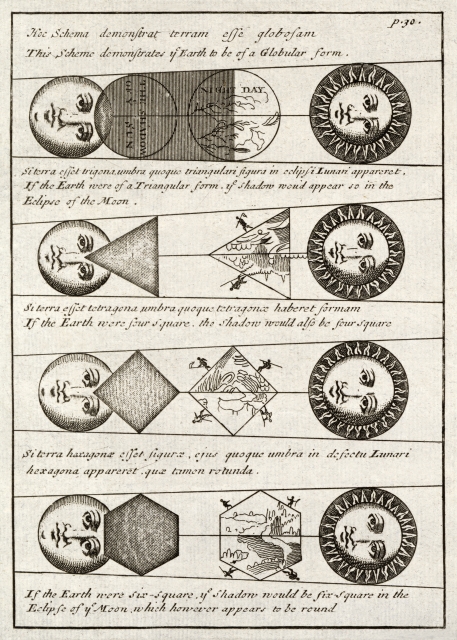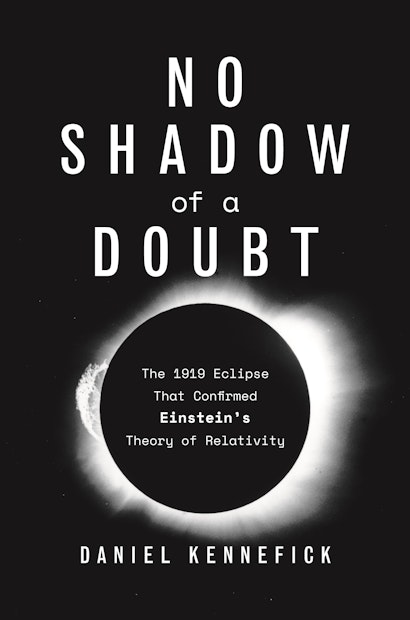What’s the best way to commemorate a historic scientific experiment? Centenaries are popular, and one of the biggest is upcoming, the centenary of the 1919 eclipse observations that confirmed Einstein’s theory of general relativity. May 29th, 1919 was the date of the eclipse, observed by astronomers from two English observatories at sites in Sobral, Brazil and the island of Principe of the west coast of Africa. This was the experiment that made Einstein a worldwide celebrity and introduced the scientific world to his theory of general relativity, which has had such prominent successes in our own day with the successful detection of gravitational waves by the LIGO project and the first imaging of a black hole by the Event Horizon Telescope. The centenary of the eclipse is being marking by gatherings at the two eclipse sites and other events will occur through the year.
Of course the public in the United States is currently knowledgeable about eclipses of the Sun, with many Americans having recently witnessed one on August 21st, 2017. The track of that eclipse’s totality crossed the continent from west to east permitting large numbers of people to enjoy this remarkable natural phenomenon, visible uniquely on Earth, whose Moon happens to be the same apparent size in the sky as our Sun. This permits it, every so often, to precisely blot out the main body of the Sun, permitting the corona, the outer solar atmosphere, to be visible. This eclipse was in fact the first to cross the United States in this way since the eclipse of 1918, which was coincidentally, the only pre-1919 eclipse at which data intended to test Einstein’s theory was successfully taken. This was done by the Lick Observatory of California at a station in Goldendale, Washington but unfortunately equipment shortages frustrated their plans and their results were never published.
Given the requirement that the light deflection test of general relativity needs to be conducted during an eclipse (as far as optical astronomy is concerned), what about the possibility of reenactment of the experiment? This is a more participatory kind of celebration which occurred to a number of people as the approach to 2017 began. One advocate, Toby Dittrich of Portland Community College in Oregon, mobilized a group of astronomers and educators from across American to replicate the Eddington experiment, but funding was lacking to do the experiment on the originally envisaged scale, which would have had students from colleges and school all along the track of totality performing with specially purchased equipment. Nevertheless Toby did interest professional astronomer Bradley Schaeffer in the experiment, and independently amateur astronomer Don Bruns made his own effort. These three groups all performed the experiment at the eclipse on August 21st, 2017 and Bruns has published his results, which are very impressive.
Oddly enough the eclipse of 2017 managed to combine the roles of reenactment and centenary. August 21st, 1917 was the date of the first attempt to test general relativity when astronomers at the Kodaikanal observatory in India attempted to observe the bright star Regulus in conjunction with the Sun in daylight, without an eclipse. The attempt was foiled by cloud and is impractical anyway. But exactly 100 years later, Regulus was once again in conjunction with the Sun (as demanded by our solar calendar) and remarkably, a total solar eclipse across the landmass of the world’s most scientifically advanced country, permitted the test to be performed successfully. Coincidentally, August 21st was also the date of an eclipse in 1914 at which German astronomers planned to test Einstein’s theory but could not because they were arrested as enemy aliens by Russian authorities when World War I broke out
But what if the 2017 eclipse merely served to whet our appetite for this experiment? Unusually, the United States is privileged to witness two total solar eclipse within a decade when another track of totality will cross the country from south to north in 2024. The two tracks will intersect at Carbondale, Illinois, the citizens of which will get to witness two totalities in seven years, a most unusual occurrence. Have pity, for instance, on the poor Irish (my own home country) who last saw an eclipse in 1724 and will next see one in 2090. The experience of 2017, which showed that modern large format CCDs with powerful but portable and inexpensive telescopes can put the experiment within the reach of wealthy amateurs. Perhaps next time public funding can be obtained to permit students to get involved. With a large data set a very good result with small error bars could be obtained. Something to aim for, when the next eclipse comes!

